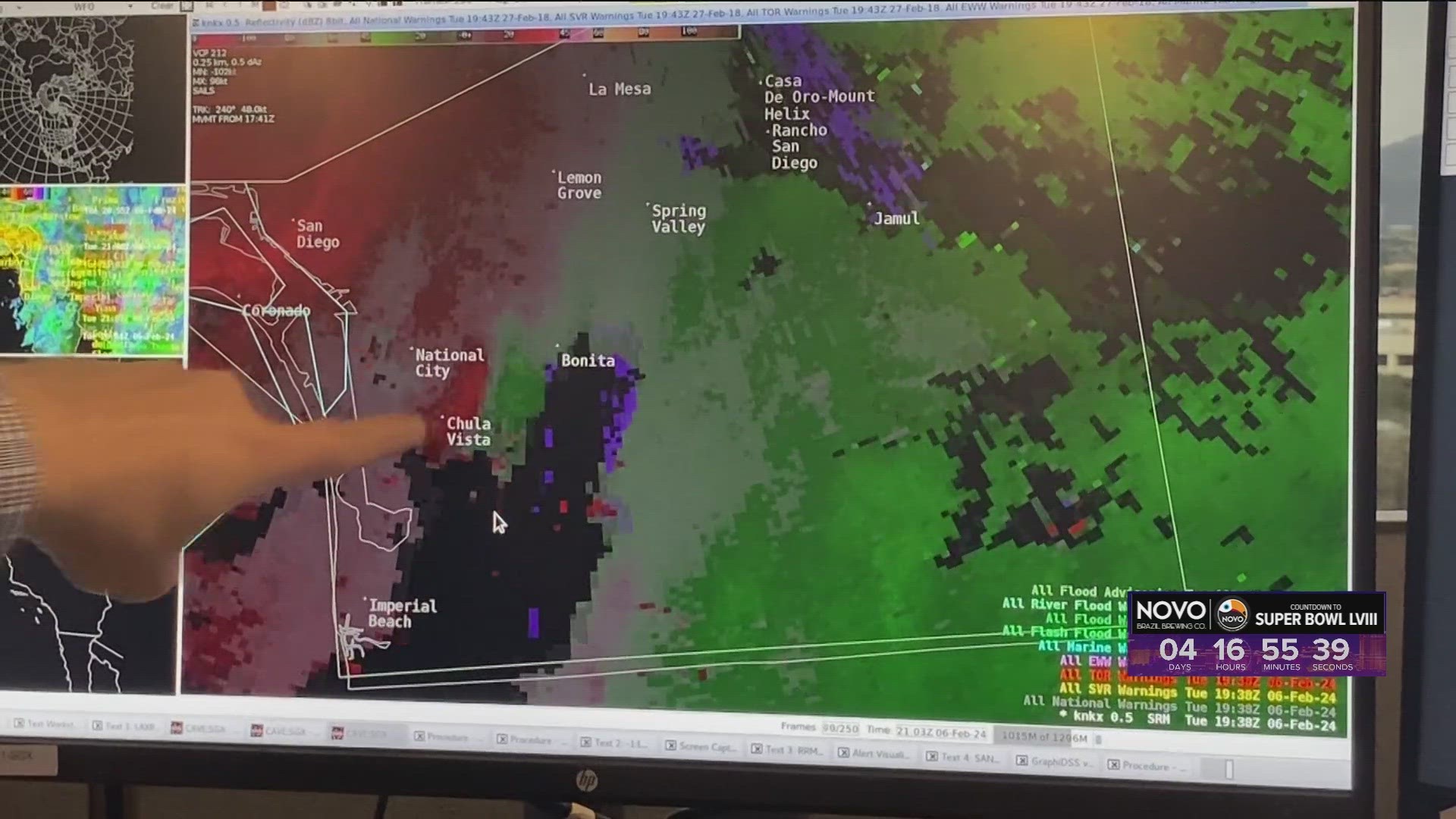SAN DIEGO — The National Weather Service in San Diego issued a Tornado Warning for southcentral San Diego County during the late morning hours of Tuesday, February 6, 2024.
The warning expired at 12:15 p.m. At 11:44 a.m., a severe thunderstorm capable of producing a tornado was located over Paradise Hills or near Chula Vista.
According to the National Weather Service, locations that were in the impact zone included: Chula Vista, El Cajon, National City, La Mesa, Tierrasanta, Santee, Lemon Grove, Encanto, Rancho San Diego, La Presa, Paradise Hills, Lincoln Park, College East, Lake Murray, Spring Valley, Rolando, Crest, Lakeside, Bonita, and Mountain View.
During the Tornado Warning, the National Weather Service advised the potential for the following impact: Flying debris that would be dangerous to those caught without shelter. Mobile homes would be damaged or destroyed. Damage to roofs, windows and vehicles would occur. Tree damage was likely.
San Diego Tornado Warnings
The issuance of a Tornado Warning is rare. The last time a Tornado Warning was issued in San Diego County was August 20, 2023 with Hurricane Hilary and before that a warning was issued in March of the same year.
What is a tornado?
According to the National Weather Service, tornadoes are violently rotating columns of air, extending from a thunderstorm, which are in contact with the ground. Tornadoes develop when wind variations with height support rotation in the updraft. Tornadoes come in different sizes, many are narrow rope-like swirls and others as wide funnels.
How does a tornado form?
The key atmospheric ingredients that lead to tornado potential are Instability, a change in wind speed and/or direction with height. Instability is defined as: warm moist air near the ground, with cooler dry air aloft and wind shear, according to the National Weather Service.
All thunderstorms have the potential to produce tornadoes, but the type of storm that is most commonly tornadic is the supercell. This very severe, long-lived thunderstorm contains circulation aloft (mesocyclone) that grows upward through the storm and downward toward the ground. When conditions are favorable, tornadoes will be produced. Supercells may produce strong, violent tornadoes or several tornadoes over a period of several hours
Ways to stay safe in a tornado
- Move to an underground shelter, basement or safe room.
- If the above is not available, more to a small, windowless interior room or hallway on the lowest level.
- Abandon mobile homes and go to the nearest sturdy building or shelter immediately.
- If you are caught outdoors and a basement or sturdy building is unavailable:
- Immediately get into a vehicle, buckle your seat belt and try to drive to the closest sturdy shelter.
- If flying debris occurs while you are driving, pull over and park.
- Now you have the following options as a last resort:
- Stay in your vehicle with the seat belt on. Put your head down below the windows, covering it with your hands and a blanket if possible.
- If you can safely get noticeably lower than the level of the roadway, exit your car, and lie in that area, covering your head with your hands.
- Find information on what to do before and after a tornado here
Watch Related: Tornado Warning issued for southcentral areas San Diego County (Feb 6, 2024)

